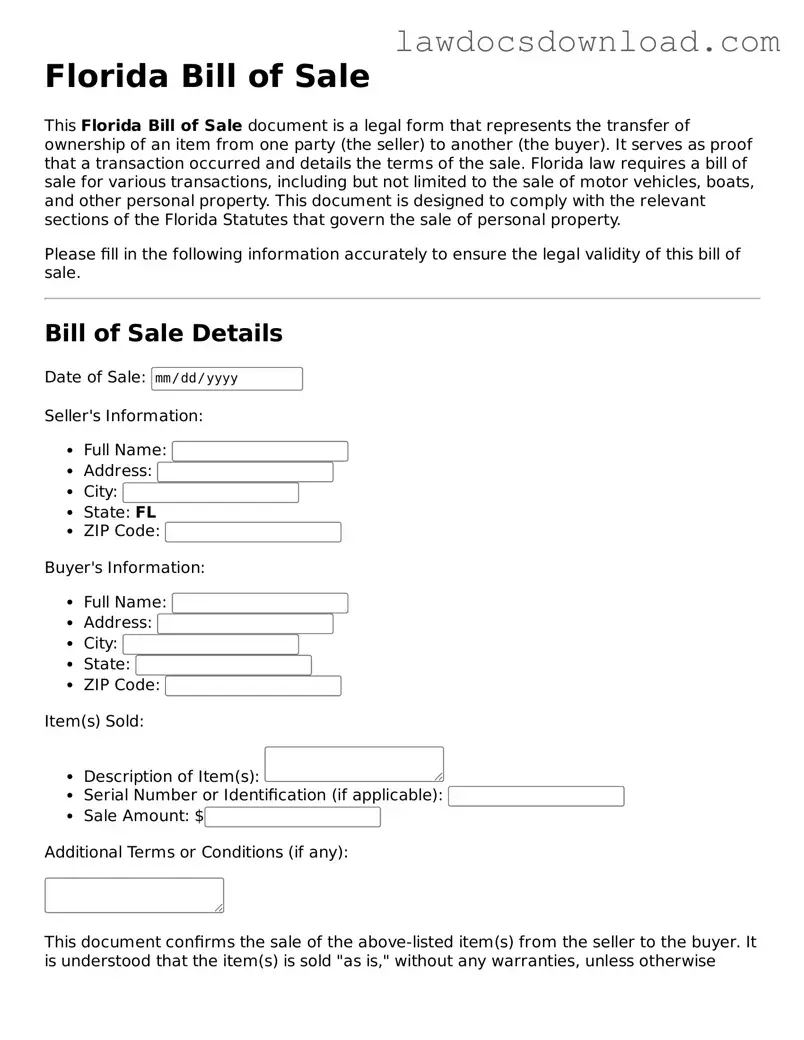The Warranty Deed is a document similar to the Florida Bill of Sale in that it proves the legal transfer of ownership, but it specifically relates to real estate. Unlike a Bill of Sale, which can cover various types of personal property such as vehicles or equipment, a Warranty Deed guarantees that the property is free from any claims or liens, providing the buyer with a greater level of security and legal protection.
Another related document is the Quitclaim Deed, which, much like the Bill of Sale, is used to transfer property rights between two parties. However, the key difference lies in the level of protection offered to the buyer: a Quitclaim Deed does not guarantee that the seller holds clear title to the property, making it a riskier option for the buyer compared to the assurances provided by a Bill of Sale or a Warranty Deed.
The Promissory Note bears resemblance to the Bill of Sale as it signifies an agreement between two parties. This document specifies the borrower's promise to repay a debt to the lender, outlining the loan's terms and conditions. While the Bill of Sale confirms a completed transaction of ownership transfer, a Promissory Note deals with the terms of repayment for a debt or loan, serving as a financial agreement rather than a sales agreement.
A Security Agreement, like the Bill of Sale, establishes a legal arrangement between parties. However, it is specifically geared towards transactions that involve securing a loan with collateral. This document protects the lender's interests by allowing them to seize the collateral if the borrower fails to meet the terms of the loan, contrasting with the Bill of Sale's primary function of documenting ownership transfer.
The Title Document, especially for vehicles, is akin to the Bill of Sale in that it is crucial for confirming ownership. The key difference is that a Title officially records an item's ownership details with a governing body (like a state DMV for vehicles), while a Bill of Sale serves as evidence of the transaction between buyer and seller. The Title is necessary for legal ownership and registration, complementing the Bill of Sale’s role in the transaction.
Similarly, the Sales Agreement outlines the terms and conditions of a sale between a buyer and seller, much like the Bill of Sale. However, it is often more detailed and can include warranties, specific conditions of the sale, delivery details, and payment terms. While the Bill of Sale confirms the transaction has taken place, a Sales Agreement can be used to negotiate the terms before finalizing the sale.
The Receipt is a simple document that, like the Bill of Sale, acknowledges a transaction has occurred. The key distinction is in the detail and function: a Receipt typically provides a straightforward confirmation of payment for goods or services, lacking the legal weight and detail surrounding the transfer of ownership that a Bill of Sale provides. It’s more of a proof of payment rather than proof of legal ownership transfer.
Finally, the Lease Agreement shares similarities with the Bill of Sale in that both document agreements concerning property between two parties. Unlike the Bill of Sale, which records the sale and transfer of ownership of personal or real property, a Lease Agreement details the terms under which one party agrees to rent property owned by another party. It specifies the duration of the lease, payment terms, and other conditions but does not transfer ownership.
